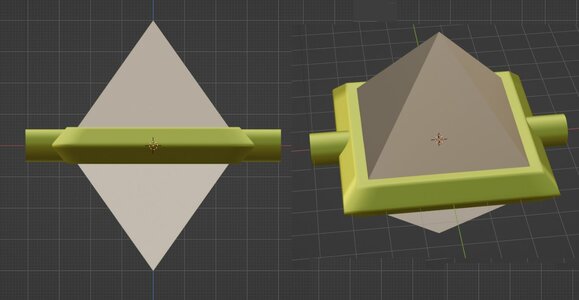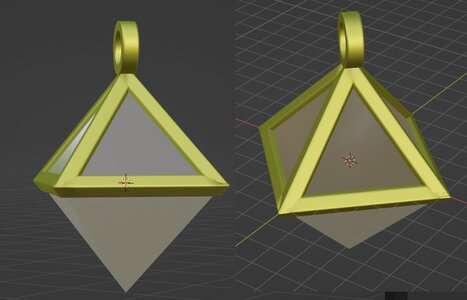freddyboston
Brilliant_Rock
- Joined
- Aug 2, 2023
- Messages
- 718
I'm worried the cage will obscure the star, or at the least take the focus off it.
ETA: What about a setting that holds it from the sides, kind of like a tension setting. Or, could the @RMOO one be used without the band across the middle, maybe with a teensy prong or "cup" where the points meet?
I'm worried the cage will obscure the star, or at the least take the focus off it.
I'm worried the cage will obscure the star, or at the least take the focus off it.
ETA: What about a setting that holds it from the sides, kind of like a tension setting. Or, could the @RMOO one be used without the band across the middle, maybe with a teensy prong or "cup" where the points meet?
This was actually one of David's ideas for how to set it--he sent me the same link haha. I guess I'm super hesitant to drill the stone, which is why i initially said no to this.
@ShinyPink this is where I was going too. I did a little mock up.
oooo that's great. Thanks for helping me figure out what that would look like!
Which orientation shows the inclusion the best, and makes it the most visible in person, north/south or east/west?
North/South for sure.
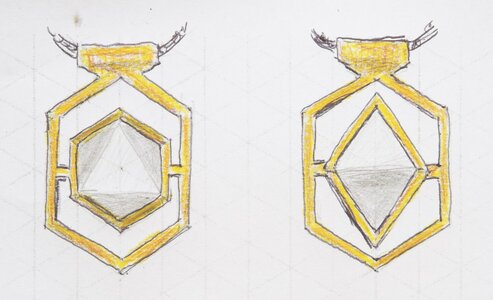
Some thoughts:
A 'cage' seems feasible. The illustrated one looks a bit unrefined. Maybe some clever design could yield a cage that works to enhance the stone. A possible issue: The stone is not perfectly octahedral. I can't make out its exact shape from the video, but at a minimum, some edges are sharp, some rounded. Any cage would have to accommodate this.
The best view of the star is looking square-on to a face. IMO, the next best view is square-on to an edge, which shows two (apparent) stars. A spinning 'half-cage' could show both views without any obstruction by metal. Here is a sketch:
The metal is shown in gold for clarity, but you can use any metal you like. You can also remove the lower half of the frame, if you are not obsessed by symmetry. (This would be like the original 'calipers' concept.) Note that the half-cage is a weird 3D shape and will look odd in some orientations.
If you want to spin the stone without a cage, you will have to think about how it is held. I think this would require 'caps with axles' and some sort of bearings in the frame to keep them in place and aligned. This can be done:
https://www.jewelry-tutorials.com/make-spinning-ring.html
https://www.atelier-berger.de/
But you may have to find the right jeweller...
Some thoughts:
A 'cage' seems feasible. The illustrated one looks a bit unrefined. Maybe some clever design could yield a cage that works to enhance the stone. A possible issue: The stone is not perfectly octahedral. I can't make out its exact shape from the video, but at a minimum, some edges are sharp, some rounded. Any cage would have to accommodate this.
The best view of the star is looking square-on to a face. IMO, the next best view is square-on to an edge, which shows two (apparent) stars. A spinning 'half-cage' could show both views without any obstruction by metal. Here is a sketch:
The metal is shown in gold for clarity, but you can use any metal you like. You can also remove the lower half of the frame, if you are not obsessed by symmetry. (This would be like the original 'calipers' concept.) Note that the half-cage is a weird 3D shape and will look odd in some orientations.
If you want to spin the stone without a cage, you will have to think about how it is held. I think this would require 'caps with axles' and some sort of bearings in the frame to keep them in place and aligned. This can be done:
https://www.jewelry-tutorials.com/make-spinning-ring.html
https://www.atelier-berger.de/
But you may have to find the right jeweller...
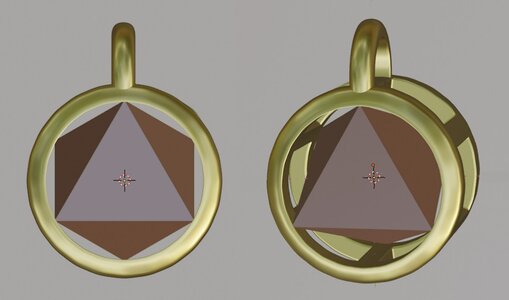
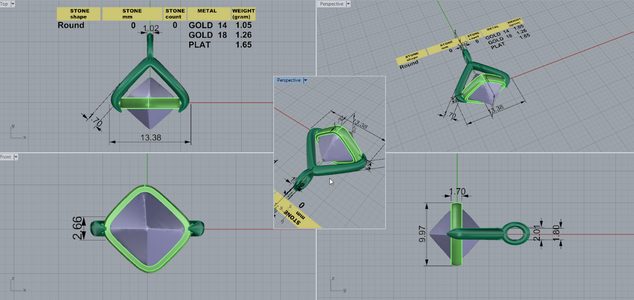
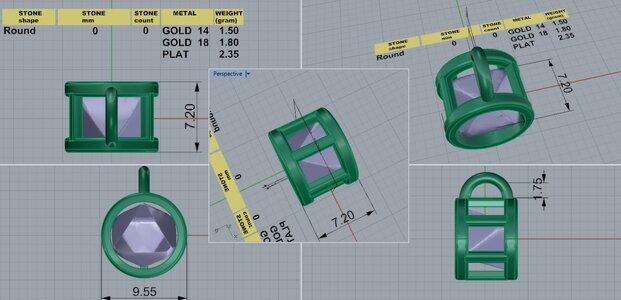
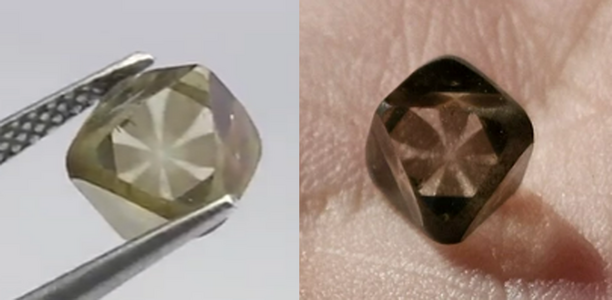
Would it be possible to "turn" the stone in design 1 so that the part "facing forward" is an entire "face" of the octahedron so that the star would face outwards/forwards?

I'm not keen on (1). It doesn't show the star straight on from usual viewing angles, and the 'bezel' will cover part of the star, whichever face you look at.
See these pictures:
Notice that you can cover the corners (e.g. with caps), because the star doesn't reach into the corners, But you don't want to cover the edges, because that will cut off the ends of the arms. Notice that some of the edges are rough/rounded. If there is a rough band right around the stone (don't know), a 'bezel' around them might be acceptable, because the ends of the affected arms are lost anyway. But I would worry that it spoils the symmetry.
On (2), as you say, I'm not sure how much the cage would shade the stone, and how much it would matter. This is why I like to play with stones at home before taking a concept to a jeweller. Note that the bale I drew was only a placeholder - I'm sure a designer could do something more stylish/practical.
Is this what you had in mind? Make the 'bezel' into a ring, so that it holds the stone by the corners but stands off from the edges.
This concept would allow the stone to spin. It would reduce shading and allow a pretty clear view of all the 'front to back' faces. The 'side' faces would be more obstructed, but I think that's unavoidable. You may have trouble making the pendant lie flat - maybe a suitable bale (e,g. 'rabbit ears'?) might help. It looks a bit inelegant as I've drawn it. No doubt an actual designer could come up with a more stylish bale and frame.
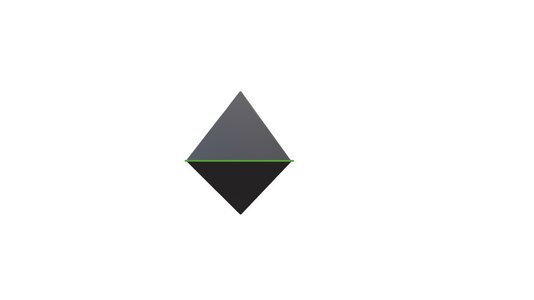
This is what I meant by having the stone be "turned". Green = bezel

